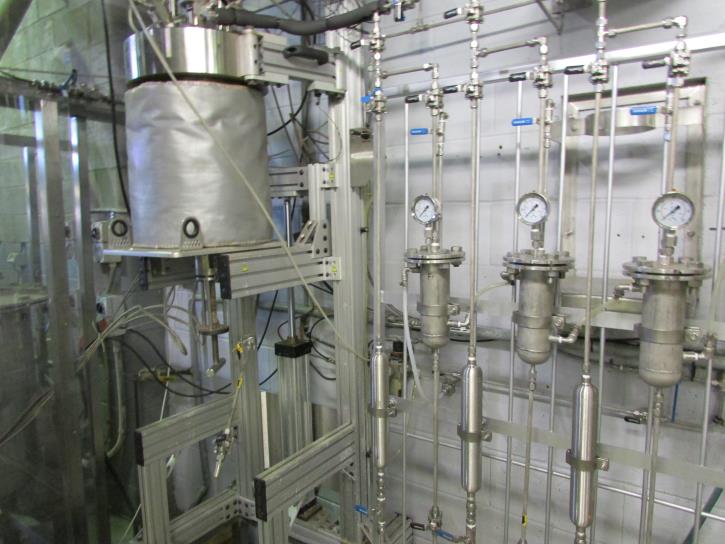New Sampling Method That Improved Production for Autoclave Operations


 New Sampling Method Enables Improved Production for Autoclave Operations
New Sampling Method Enables Improved Production for Autoclave OperationsCore has recently completed an R&D programme investigating how sampling methods used for a high pressure autoclave reaction can affect the results obtained. As part of this, Core built new sampling methods and equipment for our autoclaves. The results of this testing has enabled a current autoclave operation to significantly optimise their process control of production throughput.
Leaching minerals in a high pressure autoclave is a well-established chemical process used in mining operations globally. Typical applications of an autoclave process include oxidising refractory sulphide minerals (Pressure Oxidation or POx) and High Pressure Acid Leaching (HPAL) of nickel and other oxide concentrates.
The chemistry of an autoclave reaction is complex, and accurate measurement of process parameters is critical to the successful operation of an autoclave plant. While some parameters such as temperature and pressure can be measured directly by probes, other parameter such as redox potential and concentrations of ionic species require a sample to be taken.
Traditionally samples are taken by flashing – a process of opening a valve that enables a high pressure release of the hot slurry. In the time it takes to flash a sample from an autoclave (a matter of seconds), the chemistry of the sample can be altered significantly relative to that occurring in the autoclave. Taking a slurry from a high pressure vessel and bringing it into an atmospheric world involves considerable cooling and alteration of the pressure the sample is under.
To overcome this, Core developed a new sampling method that enables us to obtain samples of the autoclave liquor at as close to internal conditions as possible. Core operates a number of laboratory autoclaves, the largest of which is an 18.75 L Parr instrument (the largest Parr laboratory instrument available on the market).
A custom designed sampling bomb built by Core enables the slurry sample to be taken and filtered whilst still under the pressure of the main autoclave reaction. Once filtered, the liquor is taken separately for analysis.
Core has conducted a significant programme of testing using this method on refractory samples from a current operation. The testwork compared the ORP and ferrous/ferric ratio of samples taken by a standard flashing technique compared to samples taken via the new equipment.
The results were surprising, with some parameters showing a difference of up to 25% between the two methods. This has made a significant difference to our client’s management of their autoclave circuit. A follow up programme is now planned with our client using the parallel sampling methods on a range of different ores.
Core is currently exploring other applications of the sampling method, which could include at-pressure sampling of precipitation/crystallisation systems to better understand the chemistry of “what’s in the POx”.

Get in touch
36 Corunna Street, Albion, Queensland, 4010, Australia,
+61 7 3637 8100
© Core Resources 2024